The Garmin Montana 650 is one of three models in Garmin’s newest handheld series. With it’s huge 4” touchscreen, I had initially thought the Montanas were targeted to the motorized crowd (ATV’s, etc.), but after spending over a month with one, I’m convinced that a lot of hikers and geocachers will be attracted to it as well. Before we get into the details, here’s some info on the rest of the series…
Related units
- The 650t adds preloaded 100k scale topos to the 650’s feature set
- Or drop down to the 600 and you’ll lose the 650’s camera
- Note that all three Montana models have a tri-axial electronic compass and barometric altimeter
- To see how the Montanas stack up against other models, check out our Garmin handheld GPS comparison chart
NOTE: Much of the following is taken from my hands on review of the Montana 600.
Garmin Montana 650 hardware
Display
The Montana’s 4” display, and the features that the expanded screen real estate allows, are some of the prime factors making this an attractive device. The screen is recessed, giving it an extra bit of protection. BTW, that 4” display offers almost twice the viewing area of the Oregon series (45.19 sq. cm. vs. 23.94 sq. cm.), and more than twice that of the 62 series (19.8 sq. cm.)
Visibility is better than the Garmin Oregon x50 series, thanks to a slightly lower resolution screen (relative to screen size; 2889 pixels per sq. cm. vs. 4010 pixels/sq. cm. for the Oregon series), which means significantly more light can be reflected back to Montana users. Personally, I don’t find it to be a huge difference, but it is still another incremental improvement, making it somewhat better than the Oregon 450.
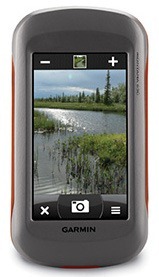 The screen rotates automatically between landscape and portrait views. Interestingly enough, it only rotates three ways, not four. In the image above of another model in the Montana series, it doesn’t matter if the “Montana 650” text on the body of the device is at the top or bottom in landscape mode, but in portrait mode, the “Garmin” text must be at the bottom; the screen will not rotate 180 degrees from this position. One thing I found as a result of having landscape mode available – I can see all of long waypoint names. Nice!
The screen rotates automatically between landscape and portrait views. Interestingly enough, it only rotates three ways, not four. In the image above of another model in the Montana series, it doesn’t matter if the “Montana 650” text on the body of the device is at the top or bottom in landscape mode, but in portrait mode, the “Garmin” text must be at the bottom; the screen will not rotate 180 degrees from this position. One thing I found as a result of having landscape mode available – I can see all of long waypoint names. Nice!
Screen rotation is generally fast, taking just a second or two as long as the unit is being held at an angle approaching vertical. Hold it horizontally, flip it, and it can take quite a while to figure it out, even if you then incline it vertically. In actuality, this takes some getting used to, since many users tend to hold the device at an angle closer to horizontal than vertical.
Camera
While I did not test a model with a camera (the 650 and 650t have this; I tested the 600), I have included a picture of the camera screen (above at right) and one showing the rear of the unit with the camera lens below.
Dual-use
When combined with a Garmin mount that features an external speaker, and City Navigator maps, the Montana can deliver spoken turn-by-turn directions, calling out street names. I have yet to pony up for that combo (though I do plan to test it in the near future), but I have been using the Montana with Garmin’s Topo US 24K, which includes routable roads. I only get a beep, but I am getting turn-by-turn directions, using maps that aren’t locked to a single unit.
As you can see above, there is a “nuvi” mode, which will definitely give you a very nuvi-like experience. It is a true joy to be able to navigate to a cache or trailhead by car, using your handheld. Gone are the days of having to load waypoints to two units.
UPDATE: Here’s a more in-depth look at setting up the Garmin Montana for highway use.
Interface improvements
Here’s a brief video showing some of the improvements:
I covered the items below in my “first looks” post, so feel free to skip ahead if you’ve read this already.
This is where the Montana really shines. The interface brings the best of both worlds, offering the ease of touchscreen input found on the Oregon series, and the easy access to menu items from the 62 series. But that statement doesn’t do the Montana justice; its access to features is light years ahead of my 62s.
Here’s a look at the Montana’s main menu, which is the screen you’re always greeted with upon startup.
Tap the arrow icon on the right to open the App Drawer.
You can drag apps between the App Drawer and the Main Menu.
If you add more than nine, you’ll lose the names and just have icons. Items in the App Drawer can be rearranged as well.
Also new is a Favorites dashboard, shown below. You can have more than three installed; they will scroll within the dashboard.
Note also the arrow icon at the left of the Favorites dashboard above. Tap it to have the dashboard slide out of sight and get a full screen view of the map. Tap the arrow again and the dashboard slides back into view. Nice!
A Shortcuts feature is available from the Setup menu (also from the Favorites dashboard menu). Shortcuts can be added to the Main Menu, App Drawer or Favorites. This feature is a little buggy, with many shortcuts not working. I did manage to place a working shortcut to the display settings on my Favorites dashboard. Once Garmin works the bugs out of shortcuts, you should be able to access just about any feature with a couple of taps.
One of the big improvements is also one of the simplest, the addition of the menu icon (the icon with the three horizontal bars below at left).
Tap it on the map screen and you’ll see this…
A simple thing, but two less taps than it takes on the Oregon.
Here’s another menu tip.
One other note – you know how you can tap the power button on most Garmins to adjust the backlight, see the signal strength, time of day and battery status? Well you can add a dashboard there as well. My personal favorite is Shortcuts. So now I can tap the power key and get access to a few functions that would push me past nine apps on the home screen – items like Display setup that allows me to enable screen shots. Very nice indeed. Hat tip to Boyd for turning me onto this possibility.
Other recent features
I recently posted five six reasons to buy one of the newer Garmin handhelds, and the Montana series has all of these capabilities. Follow the link above for more details on each:
- Garmin BirdsEye aerial imagery
- Garmin BirdsEye Topo US and Canada
- Garmin custom maps
- Advanced track navigation
- Paperless geocaching
- Profiles
Garmin Montana 650 pros
- Large, bright screen
- Extensive customization options
- Garmin’s best dual-use unit
- 5MP geotagging camera
- Li-ion battery (relatively long life and you don’t have to open the battery cover to recharge)
- Much quicker access to menu items than on Oregon series
- Accurate odometer and tracklog readings
- Screen can be viewed in landscape or portrait orientation
- Easy to hide dashboards to get full screen map view
Garmin Montana 650 cons
- Relatively bulky and heavy
- Additional maps and mount required to make best highway use of device
- No carabiner clip
Conclusion and recommendation
The Montana series has some great features – a larger and somewhat brighter touchscreen that can rotate between portrait and landscape orientations, an interface that makes it much easier to access settings and switch functions, and a dashboard that can slide out of the way to give you a full screen map view. The ability, at additional cost, to set it up for a nuvi-like highway routing experience is another big plus. I love not having to send trailhead waypoints to another unit.
Garmin has done a pretty good job with this rollout. They were some bugs early on but those are slowly but surely being fixed. In the short time it’s been out, we’ve seen firmware versions 2.60, 2.70, 2.80, 3.00, 3.10 and 3.20.
I’m still not 100% sure what I think of the size of the device, but it really hasn’t seemed too big in my hand. And I’m still waiting on a RAM mount (which is due out any day now) so I can try it on my bike; I’ll be doing a new post on that subject once I’ve tested it.
Most men shouldn’t find the Montana too big; women will smaller hands might be another story, nor is it likely to suit lightweight hikers and backpackers. Yet it should appeal to some other hikers and geocachers, and certainly the motorized crowd (ATVs, snowmobiles, 4WDs, etc.). I guess the clearest statement I can make about size for now is this – if you’re attracted to the feature set, the benefits may well outweigh any concerns about size.
More Garmin Montana 650 reviews
- Consumer-authored Garmin Montana 650 reviews
have been posted at Amazon
- Consumer reviews of the Montana 650 are also being posted at GPS City
- Just Trails has posted their own review of the Garmin Montana 650
I’ll be posting more hands on GPS reviews as they appear, but in the meantime, here are some…
Other Garmin Montana 650 resources
- The Garmin Montana 650 owners manual
- To see how the Montana stacks up against other models, check out our Garmin handheld GPS comparison tool
- A Garmin Montana wiki
- The official Garmin Montana 650 web page
Compare prices on the Garmin Montana 650 at these merchants:
- Check the current Garmin Montana 650
price at Amazon
- Get a great deal on the Garmin Montana 650 at GPS City
- Check out the deal on the Garmin Montana 650 GPS
at REI.com, where satisfaction is guaranteed and members get 10% back on eligible purchases
- Find the Garmin Montana 650 for a great price at Eastern Mountain Sports
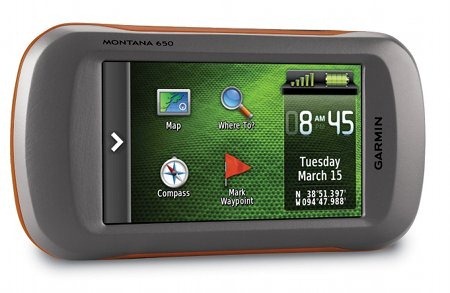



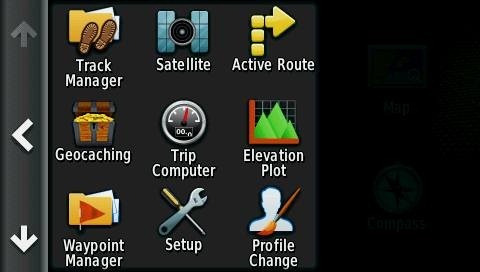
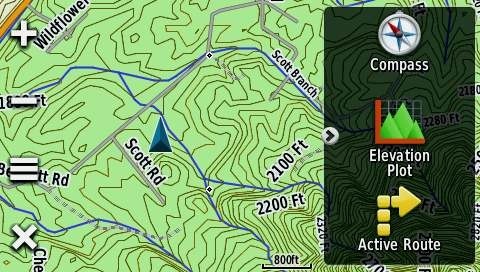
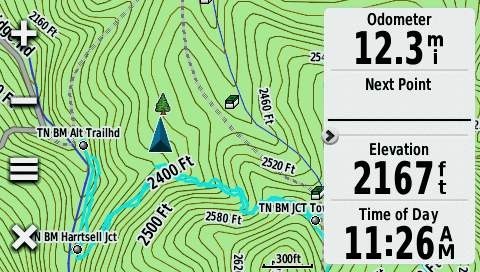
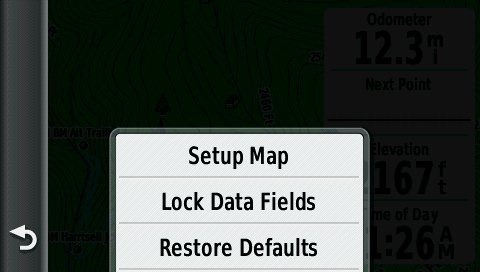


Maybe this has been out for a while but I noticed a new update (via WebUpdater) that is simply labled “Help Files”. Once the update is complete there is a new menu item in each setup screen called “Help”. Tapping the help menu will open up a page full of descriptions for each setting. Very nice addition and a long time coming if you ask my un-tech dad.
2/4/12 – Garmin Customer service is a total failure, I had a NUVI 500 and started in Mid November 2011 requesting help on MAP up dates. It was the first of January 2012 that I finely received a call and as luck would have it I had the NUVI 500 stolen that day before receiving the garmin Call.
Then I purchased a Montana 650 from Cabela’s for $ 682.00 and tried to get GARMIN to help me get maps needed on unit ( about $ 300.00 adder for a total garmin Sale of $ 1,000.00 = Not on Dam call from Garmin in three (3) weeks after sending E-mail request and leaving Voice mail requests. February 2, 2012 I replaced the Garmin Unit.
Customer service = total failure – be carefull
Yeah, email support has never been good for me. Calling them is best. Wait times are often very short, but I’ve also had it take 30 minutes.
I used Garmin Support email a little while ago and it worked fine.
For basic help with things like installing maps, it’s often best to seek the help of the user community. GPSReview and GroundSpeak have very active forums where experienced Montana users would have helped you and of course GPSTrackLog is also a terrific resource.
Rich is correct, you should CALL Garmin during business hours and wait to talk to somebody if you really want to resolve an issue. I’m a moderator at GPSReview and there the occasional post by somebody like you who has had a bad experience with Garmin support. But BY FAR the majority of people have good experiences and there are many stories where Garmin goes out of their way to help, such as replacing units that are out of warranty to transferring maps even when it’s at odds with their policy.
If you’re unhappy with Garmin support, the real question “compared to what”, and some of the alternatives are not so great…
Garmin Montana 650 Review
To provide the reader with some context I began my GPS obsession back with the Magellan 315 series back in 2001 and have owned or have gotten to use nearly every model of handheld Magellan and Garmin GPS to be released since. I’ve had my Garmin Montana since its release in June of 2011. In my review, I’m going to try and touch on aspects that either haven’t been covered or covered lightly in the original review by Rich Owings. I may add some thoughts about my experience regarding some topics Rich has covered well.
In today’s current technology market touch screen interfaces are king. From smart phones to computer tablets, touch screen technology, interface, and menu systems are prominent in some of the most high tech gadgets available. Garmin handheld devices such as the Oregon and Dakota have utilized touch-screen technology for years now however the intuitiveness and functionality found in these older touch screen interfaces/menu’s has left much to be desired. For example on the map screen one would expect to see a button to access the map setup menu but no such button exists on the early Garmin handhelds. Not to mention these older handhelds screens aren’t as responsive to touch and swiping motions.
Enter the Garmin Montana. Garmin has addressed many of the intuitive and functional expectations one would have from a modern touch-screen device. The Montana’s readily accessible setup menus, responsive touch-screen, and customizable layout is as close to the current field of other high-tech devices as it gets in a handheld touch-screen GPS. The swiping motion issues from earlier models has been corrected with a software update. All of that being said however many people still may prefer the button interface as seen in the 60, 62, and etrex lines and perhaps the Montana series would not be the first choice for those users.
ACCURACY: The Montana, under normal conditions has a lock before the unit has even booted up. There have been some sporadic WAAS issues but they have been addressed in software fixes to the unit (as of software v4.1). Frequent tracklog comparison tests between the Montana and the venerable 60csx yield similar results with errors that fail to christen a clear winner. What does that mean to those who may not necessarily know how good the accuracy of the 60csx has traditionally been? It means the Montana is on par with one of the most stable and accurate performers to date. Satellite lock under tree canopy and in natural canyons is also commendable. After one year of use I have yet to lose a lock in an outdoors setting. Living in Montana, with our many canyons and deep forests, that’s saying something.
DIGITAL CAMERA: The only thing that sets the Montana 650 apart from the 600 is the addition of an on-board digital camera. Perhaps the best thing about the on-board camera is that it automatically geo-references photographs. The image quality of the photographs rivals that of a good camera phone or touchpad so don’t expect to win any photo contests with the images the 650 will produce. Personally I feel that the camera is an extra feature that really isn’t worth the extra price. Any designated point and shoot camera lying around in a closet somewhere will surpass the 650’s image quality and there are free software programs out there that will use your tracklog to geo-reference any photo from a separate camera as long as it has a timestamp. Unless you prefer the ease of automatically geo-referenced images and image quality isn’t a concern I would suggest saving a few bucks and going with the Montana 600.
DATA FIELDS: Many users customize their Trip Computer with data fields that are relevant to their particular use or need. A few months back Garmin added via software, some new data fields to the Montana never before available on their handheld units. My feeling at the time was that Garmin eventually planned to add these fields to all of their current lineup of units however they never made it and it appears as though Garmin used them to further separate the Montana from the rest of the pack.
These data new fields are:
Alarm Timer (from alarm clock page)
Automotive Turn (lane assist),
Avg. Lap, Compass Heading
Current Lap
Date
Elevation Above Ground
GPS Elevation
GPS Heading
Grade (must be moving)
Lap Distance
Laps
Last Lap
Location of Destination
None (blank field)
Stopwatch Timer
Total Lap
Track Distance (reset when current track is cleared)
Vertical Dist. to Dest
Vertical Dist. to Next
A few of the aforementioned fields have been much anticipated by outdoor enthusiasts such as the Vertical Dist. To Destination, GPS Elevation, and Track Distance fields. All very useful data that, in my opinion should be on all handheld GPS units. But Garmin doesn’t appear to be implementing them on any other current model. If these data fields are important to you, the Montana is your only option.
SIZE: There’s no question about the Montana in terms of size. It’s BIG. BUT not big enough to warrant any real pause in my opinion. With the rechargeable Li-Ion battery the weight difference between the Montana and other units like the Oregon and 62 is negligible. The added features, improved performance, and gorgeously large screen, more than make up for any inconvenience due to its larger size.
DUAL USE: Many GPS users have yearned for an all-in-one unit over the years. The Montana has been designed to serve those dual purpose dreamers and it does it well in my opinion. The large screen is easy to glance at while driving and biking unlike most other handhelds. The nuvi dashboard allows users to see what many of the Garmin dedicated vehicle GPS units display. With City Navigator maps loaded users can see Lane Assist, Speed Limit, Navigation Text, Speed and a customizable data field all from the map screen. Add a Garmin auto mount and you can even hear turn by turn spoken directions. The Montana serves the dual use niche well.
SUMMARY: Overall the Montana 650 is a well implemented, cream of the crop, top of the line Garmin handheld that leaves little to be desired. The price tag isn’t cheap but if you want one of the most versatile, customizable, accurate units on the market then the Montana 650 should definitely make your short list. 5 stars!
with montana 650 , When you try to change the name of a copy of the images that were filmed for sites in advance, the device become shutdown ! ! !
my software 4.60
Email [email protected] and let them know.
Hi,
Please,
I´m interested in knowing if the Montana also has these new Oregon Track Navigation features, in your words:
” Select a track to navigate and a route will be created. Waypoints are created for the high and low elevation points and any user waypoints along the track are added to the route.
In my Montana I can see the highs and lows but user waypoints almost don´t show because they appear “under” the pink colored route. Actually, most of the times you can not even see them.
Thank you,
Yes, that’s the way it works. I suggest adding data fields to the map screen for Waypoint at Next and Distance to Next… http://gpstracklog.com/2010/07/navigating-tracks-on-the-new-garmin-handhelds.html
hi,
I want purchase gps MONOTANA send prices &how Ican get it?
Azizar